5 NASA photos that changed the world

From the most beautiful to the most impactful, some of these are so powerful it’s breathtaking.
“Truth in science, however, is never final, and what is accepted as a fact today may be modified or even discarded tomorrow. Science has been greatly successful at explaining natural processes, and this has led not only to increased understanding of the universe but also to major improvements in technology and public health and welfare.” –National Academy of Sciences
Ever since humanity first broke the bonds of gravity and slipped up above our planet’s atmosphere, we’ve been able to view the Universe like never before. No longer restricted to our location here on Earth, and no longer doomed to fight with the interference from the miles and miles of atmosphere above us, we’ve finally discovered cosmic truths that have eluded us for the whole of human history. Thanks to advances in spaceflight, and the ingenuity and investment of NASA, our scientific growth has come right alongside some of the most spectacular and illuminating images ever returned to Earth. In five separate arenas, here are five images from NASA that changed how we view the world.
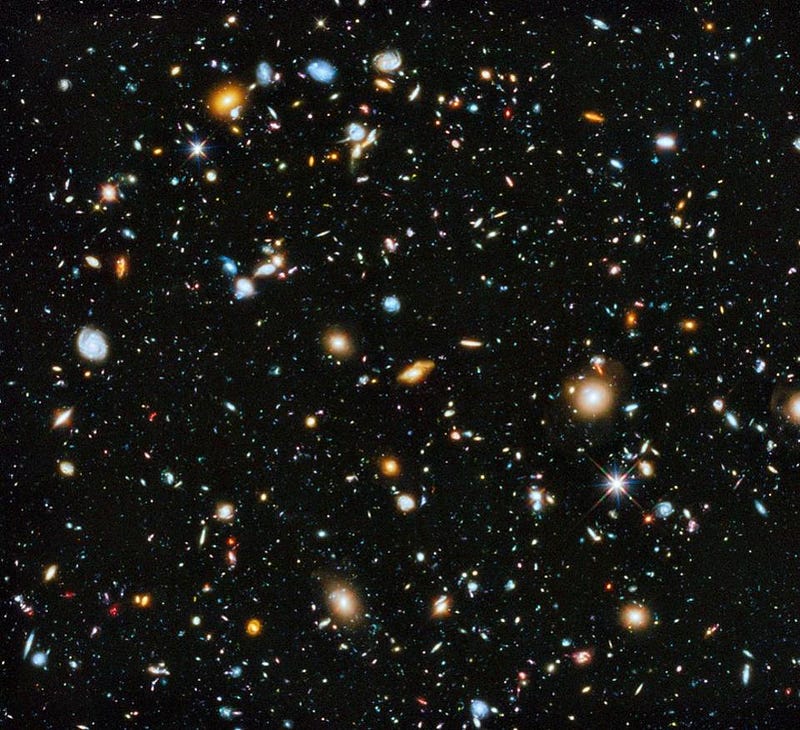
1.) Hubble’s “Extreme Deep Field” composite. More than 20 years ago, the first Hubble Deep Field image was taken. By pointing at a blank patch of sky and collecting single photons for days on end, it was able to reveal what lies out there in the great cosmic abyss: billions and billions of galaxies. Hubble’s equipment has been upgraded multiple times since then, making better use of every photon, extending deeper into the ultraviolet and infrared, and extending both its field-of-view and its depth.
The Extreme Deep Field (XDF) of the Universe is the greatest view ever taken, comprising a total of 23 days of observing time in an area of space that’s just 1/32,000,000th of the entire sky. They didn’t just find over five thousand galaxies, but incredible examples of galaxy evolution, as it was able to see back to times where the Universe was just 4% of its current age. We’ve learned how our Universe has grown up and how galaxies have gone from tiny seeds of structure to the modern behemoths we have today. Most spectacularly, we’ve been able to make our first accurate estimate of the total number of galaxies within our observable Universe: two trillion. Remarkably, all that information is encoded in one single image.
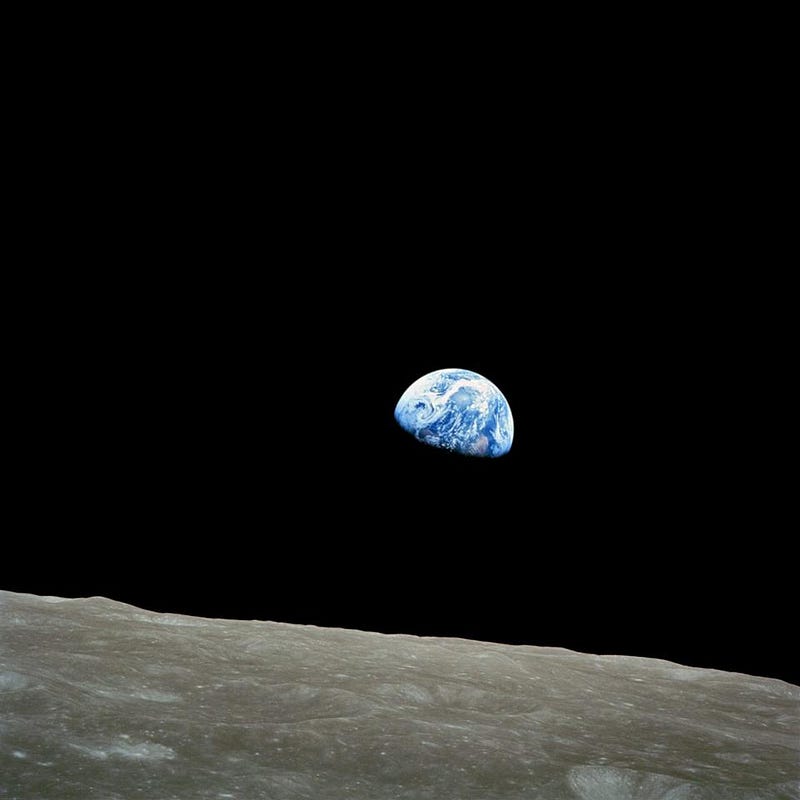
2.) Apollo 8’s “Earthrise” photo. Anything you’ve ever learned, seen, or experienced from NASA has been a result of education and public outreach. The above photo? It’s known simply as “Earthrise,” and was the first time a human being had ever seen the Earth rise over the limb of the Moon. Taken by astronaut Bill Anders as Apollo 8 completed its final pass around the far side of the Moon, it showed humanity, for the first time, how special and precious and tiny and fragile Earth is. Anders, who took the photo, said the following:
We came all this way to explore the Moon, and the most important thing is that we discovered the Earth.
But most spectacularly, when Sister Mary Jucunda wrote to NASA to tell them to stop wasting money to explore space when there was so much suffering here on Earth, the Associate Director of Science at NASA at the time, Ernst Stuhlinger, wrote back a long letter, enclosing this photograph and saying the following [excerpted]:
The photograph which I enclose with this letter shows a view of our earth as seen from Apollo 8 when it orbited the moon at Christmas, 1968. Of all the many wonderful results of the space program so far, this picture may be the most important one. It opened our eyes to the fact that our earth is a beautiful and most precious island in an unlimited void, and that there is no other place for us to live but the thin surface layer of our planet, bordered by the bleak nothingness of space. Never before did so many people recognize how limited our earth really is, and how perilous it would be to tamper with its ecological balance. Ever since this picture was first published, voices have become louder and louder warning of the grave problems that confront man in our times: pollution, hunger, poverty, urban living, food production, water control, overpopulation. It is certainly not by accident that we begin to see the tremendous tasks waiting for us at a time when the young space age has provided us the first good look at our own planet.
Very fortunately though, the space age not only holds out a mirror in which we can see ourselves, it also provides us with the technologies, the challenge, the motivation, and even with the optimism to attack these tasks with confidence. What we learn in our space program, I believe, is fully supporting what Albert Schweitzer had in mind when he said: “I am looking at the future with concern, but with good hope.”
Like millions of others, Jucunda was swayed. Thanks to this photo, we can answer with confidence the question of why investing in science is so important, even with all the suffering in the world today. It’s so that future generations never have to live through, firsthand, the sufferings that afflict us today.
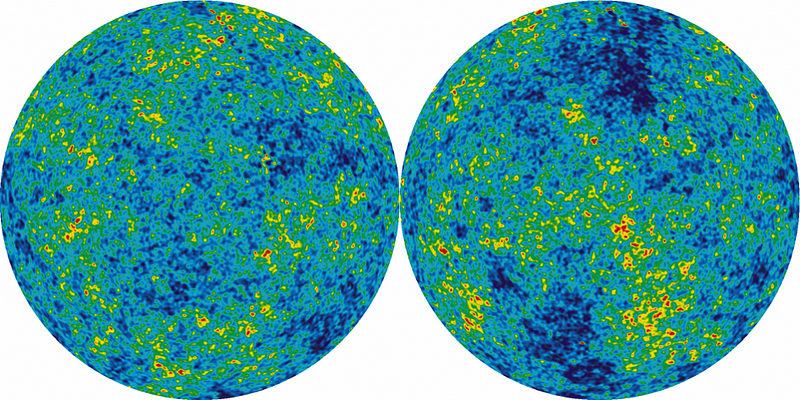
3.) WMAP’s “baby picture” of the Universe. One of the greatest discoveries of the 20th century was the leftover glow from the Big Bang: the cosmic microwave background (CMB). The Big Bang gave rise to a Universe filled with matter, antimatter, and radiation, where the radiation travels to our eyes in a straight line once neutral atoms form. The radiation is very cool today, thanks to the expansion of the Universe, but back when it was emitted, it needs to climb out of gravitational potential wells, determined by the overdense and underdense regions that existed back then.
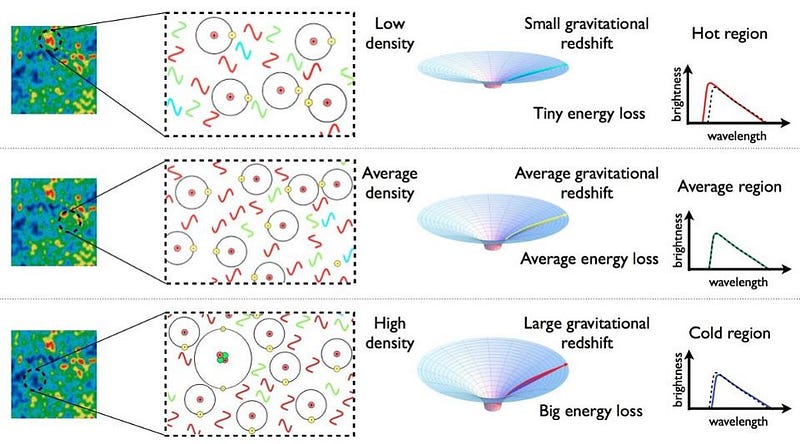
These regions grew into galaxies, clusters, and great cosmic voids, but it was the baby picture of WMAP that first revealed the details of the Universe to such a precise degree. The magnitude and distribution of these overdense and underdense regions show up as temperature fluctuations in the CMB, teaching us what our Universe is made of. The picture of our Universe as being a mix of dark matter, normal matter, and dark energy was first precisely revealed by WMAP, changing our perception of the Universe as we know it.
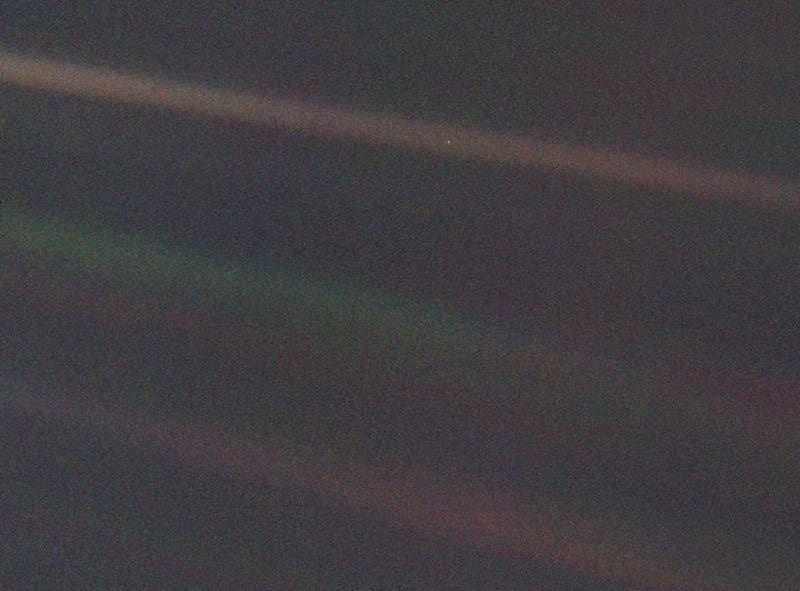
4.) Voyager’s “Pale Blue Dot” snapshot. On February 14, 1990, after more than a decade of traveling away from Earth and on its way out of the Solar System, the Voyager 1 spacecraft turned its eye back towards home. Looking back at its journey, it was able to take snapshots of six planets, including the above image of Earth, from six billion kilometers away, making this the most distant photo of Earth ever taken.

Although this image was not part of the original mission plan, Carl Sagan’s idea made it to fruition, prompting him to later write the following:
That’s here. That’s home. That’s us. On it everyone you love, everyone you know, everyone you ever heard of, every human being who ever was, lived out their lives. […] There is perhaps no better demonstration of the folly of human conceits than this distant image of our tiny world.
Voyager 1 is now some 20 billion kilometers distant, as it continues its journey into interstellar space as the most distant spacecraft from Earth.

5.) Hubble’s “Pillars of Creation” image. Many of the nebulae visible, both in our own galaxy and beyond, are star-forming regions, where cool molecular gas contracts under the influence of gravitation to form new stars deep inside their collapsed hearts. In 1995, for the very first time, we were able to peer deep inside the heart of one such region, the Eagle Nebula, and discover columns of gas amid the stars. These columns contain proto-stars still in the process of forming, and are being evaporated from both the inside and the outside, thanks to the ultraviolet light emitted from the hot, young stars that have just been created.
In other words, the “pillars of creation” are also pillars of destruction. Infrared and X-ray light reveals the stars inside, while a higher-resolution, updated version released 20 years later showcased the slow evaporation and changes taking place inside the pillars. In a few hundred thousand to a few million years, they’ll have evaporated entirely.
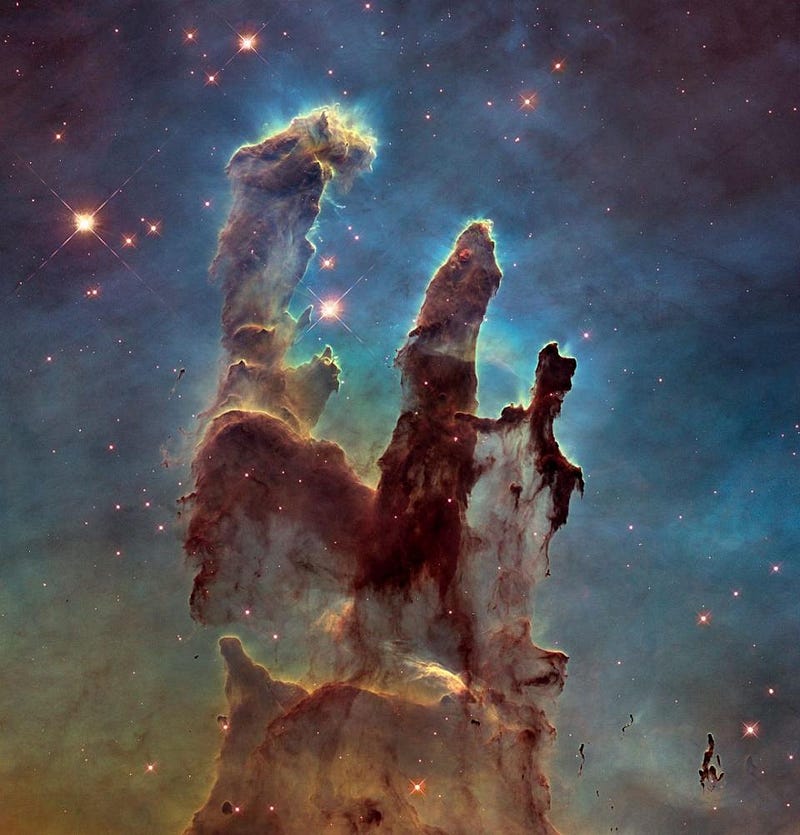
100 years ago, we didn’t even know there was a single galaxy in the Universe beyond our own Milky Way. We didn’t know how our Universe began or whether it was eternal, much less how old it was or what made it up. And we had no idea as to what the ultimate fate of the Universe would be, or how long the stars would shine. Today, we know the answers to all those questions, and so much more. When we invest in space, the benefits and repercussions resonate all over our world. As research has shown, it’s not just up to scientists, but up to all of us — the general public — to make this investment happen. We can explore, learn, and understand the Universe beyond our wildest dreams. It’s up to us to make it so.
Ethan Siegel is the author of Beyond the Galaxy and Treknology. You can pre-order his third book, currently in development: the Encyclopaedia Cosmologica.





